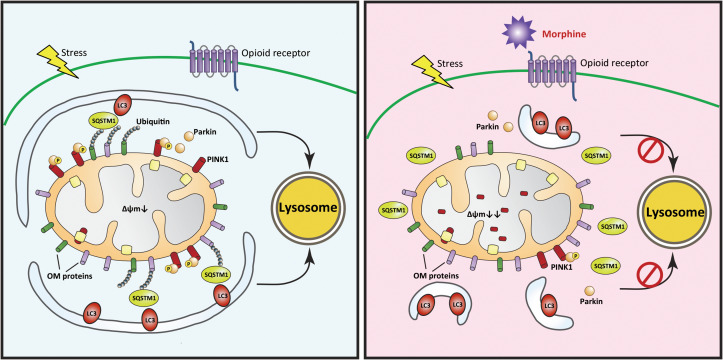Figure 8.
The schematic summary for morphine-induced suppression of mitophagy. In response to stress-induced mitochondrial damage, the ΔΨm is dissipated and full-length PINK1 accumulates at the outer mitochondrial membrane (OMM). This allows for the recruitment of the ubiquitin ligase Parkin, which ubiquitinylates outer membrane proteins of mitochondria. The damaged mitochondria are rapidly recognized by autophagosomes mediated by SQSTM1/p62 and LC3. Finally, the autophagosomes containing damaged mitochondria move to lysosomes, leading to the degradation of damaged mitochondria. However, morphine inhibits the recruitment of Parkin to the damaged mitochondria and suppresses the phosphorylation of Parkin S65 by inducing the degradation of PINK1. Therefore, morphine interrupts the recognition of autophagosomes to the damaged mitochondria, and the impaired mitochondria cannot be delivered to lysosomes by autophagosomes. It leads to the accumulation of damaged mitochondria and robust production of ROS.

